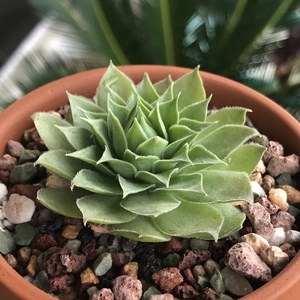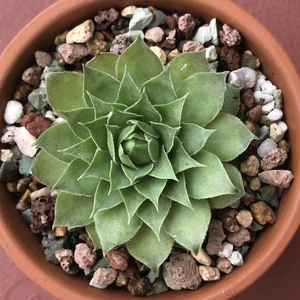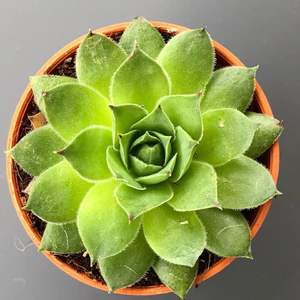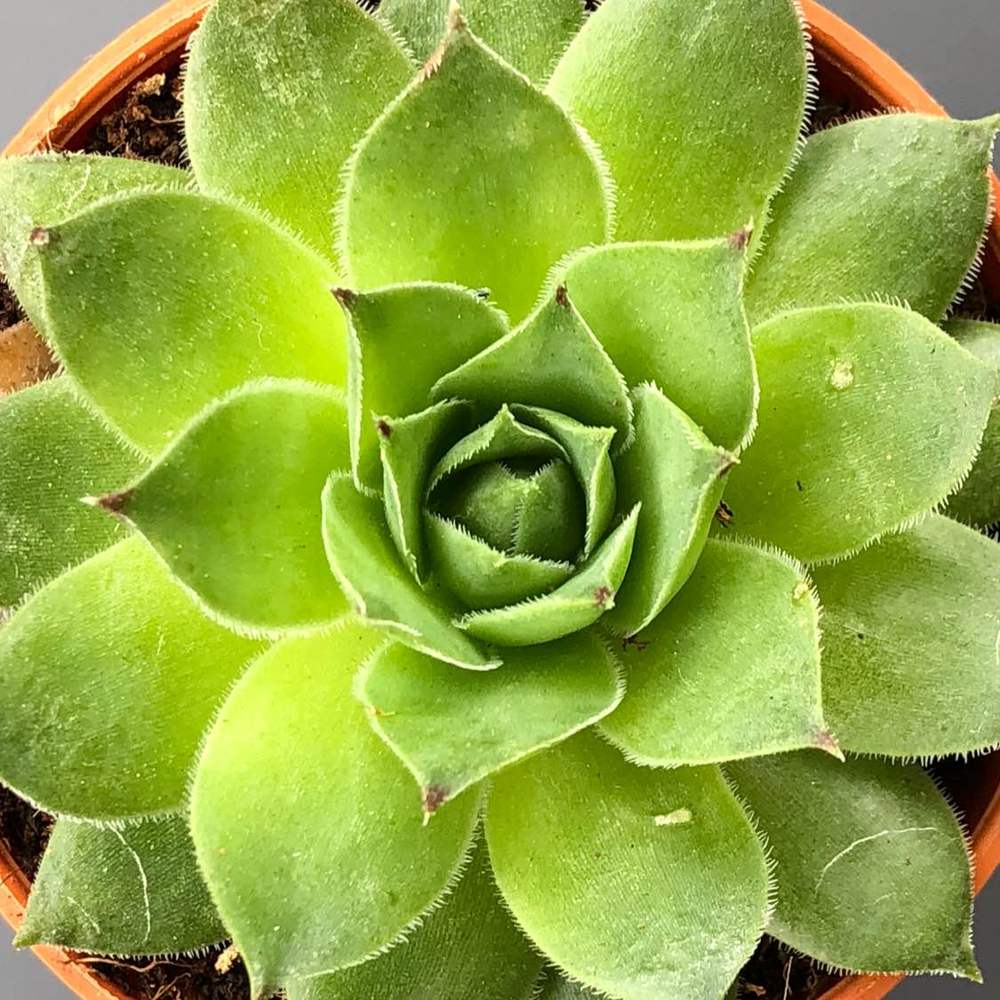植物经验
详细说明
Sempervivum, also known as “houseleeks” or “hen and chick” plants, are among the most popular succulents. They are exceptionally hardy plants and seem to thrive in cold and hot, low light or strong light. They are closely related to echeveria, kalanchoe, and crassula, which all belong to the Crassulaceae family. There is a very wide variety of sempervivum, and they are easily pressed into service as beautiful mixed-dish gardens.
Growing Conditions
Light: Full sun. Perfect for a sunny window.
Water: Water during the summer and spring, making sure drainage is immaculate. Reduce water in the winter to monthly.
Temperature: Prefers average summer temps (65ºF - 70ºF). In winter, some varieties can withstand temperatures down to freezing.
Soil: A well-drained succulent mix, with an ideal pH around 6.0 (slightly acidic).
Fertilizer: Feed with a controlled-release fertilizer in the beginning of the season or weekly with a weak liquid solution. Use a balanced 20-20-20 fertilizer at 1/4 strength on mature plants, and a fertilizer with less nitrogen on young plants.
Propagation
Sempervivum earned their popular name “hen and chicks” from their growth habit. The mother plant, or hen, sends off numerous offsets, which will cluster around her base like chicks. These offsets can be easily repotted, or the plants can be left to form a clumping mat.
Repotting
Repot as needed, preferably during the warm season. To repot a succulent, make sure the soil is dry before repotting, then gently remove the pot. Knock away the old soil from the roots, making sure to remove any rotted or dead roots in the process. Treat any cuts with a fungicide. Place the plant in its new pot and backfill with potting soil, spreading the roots out as you repot.
Leave the plant dry for a week or so, then begin to water lightly to reduce the risk of root rot.
Growing Conditions
Light: Full sun. Perfect for a sunny window.
Water: Water during the summer and spring, making sure drainage is immaculate. Reduce water in the winter to monthly.
Temperature: Prefers average summer temps (65ºF - 70ºF). In winter, some varieties can withstand temperatures down to freezing.
Soil: A well-drained succulent mix, with an ideal pH around 6.0 (slightly acidic).
Fertilizer: Feed with a controlled-release fertilizer in the beginning of the season or weekly with a weak liquid solution. Use a balanced 20-20-20 fertilizer at 1/4 strength on mature plants, and a fertilizer with less nitrogen on young plants.
Propagation
Sempervivum earned their popular name “hen and chicks” from their growth habit. The mother plant, or hen, sends off numerous offsets, which will cluster around her base like chicks. These offsets can be easily repotted, or the plants can be left to form a clumping mat.
Repotting
Repot as needed, preferably during the warm season. To repot a succulent, make sure the soil is dry before repotting, then gently remove the pot. Knock away the old soil from the roots, making sure to remove any rotted or dead roots in the process. Treat any cuts with a fungicide. Place the plant in its new pot and backfill with potting soil, spreading the roots out as you repot.
Leave the plant dry for a week or so, then begin to water lightly to reduce the risk of root rot.
花相册 (3)



kensong
2018年08月25日

Grown and needed repotting.




kensong
2018年06月12日

This is my first growing diary.







